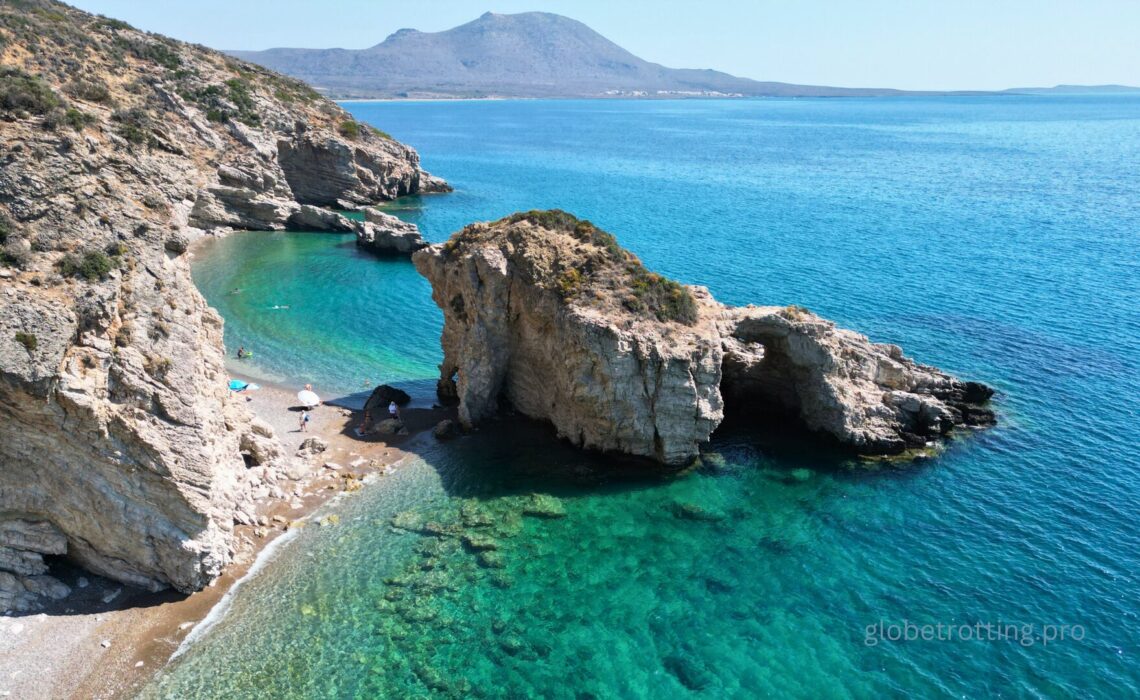
Nestled in the heart of the Aegean Sea, Kythira—legendary birthplace of Aphrodite—is a place where myth and science intertwine in fascinating contrast. On one hand, the island is steeped in enchanting fairy tales of mystical beings said to roam its forests and springs, evoking a sense of wonder and magic. On the other hand, it is connected to one of the most groundbreaking scientific discoveries of the ancient world: the Antikythera Mechanism.
This remarkable Ancient Greek hand-powered orrery—essentially the earliest known analogue computer—was designed to predict astronomical positions and eclipses with astonishing precision, decades in advance. Discovered in 1901 in a shipwreck off the nearby island of Antikythera, it stands as a testament to the ingenuity and scientific achievements of antiquity, offering a stark yet fascinating contrast to Kythira’s mythical lore.

By chance, just days before our trip, we visited the Museum of Ancient Technology in Athens and saw a replica of the Antikythera Mechanism. The original, housed in the National Archaeological Museum in Athens, underscores the island’s profound historical and cultural significance.
Our journey began early at the port of Neapoli. By sheer luck, we managed to secure last-minute ferry tickets for both our rental car and ourselves. Initially, we assumed that the car’s plate number was mandatory for booking, so we hadn’t reserved in advance. However, a call to Triton Ferries revealed there were a few remaining tickets, and we managed to secure the only ones available for the 9:30 a.m. departure. Arriving in Kythira early turned out to be perfect, as we had only planned a short two-day stay. The ferry cost €12.50 per adult and €44.50 for the car, one way. An hour later, we arrived at Diakofti port, with its turquoise waters and the view of a nearby shipwreck.
Avlemonas
A 15-minute drive from the port brought us to Avlemonas, a charming seaside village. Our first glimpse was a handicap-accessible beach, but we ventured further into the heart of the village. The historic teloneio (customs office) and vardiola (watchtower) offered glimpses into the past, where locals once safeguarded against enemy ships. We admired the yellow semprevives flowers – symbolic of eternal life – for which the island is known for, and indulged in a refreshing green smoothie at Botzio, a beachside café.
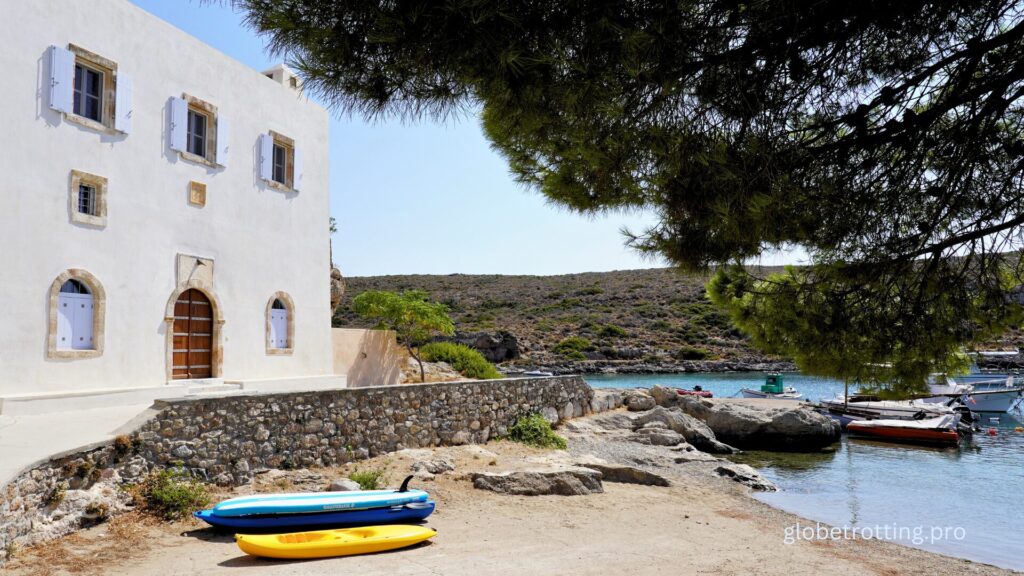
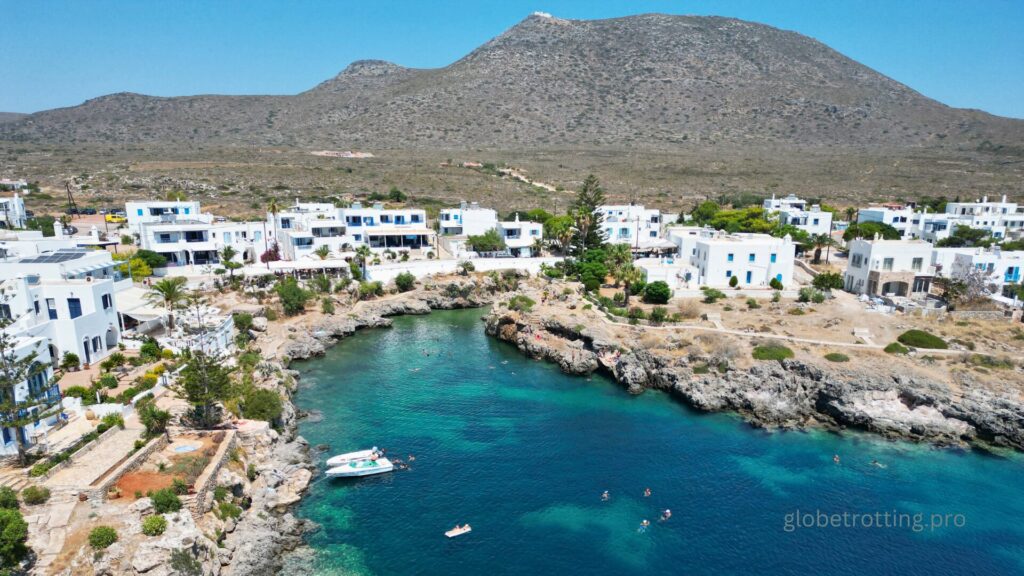
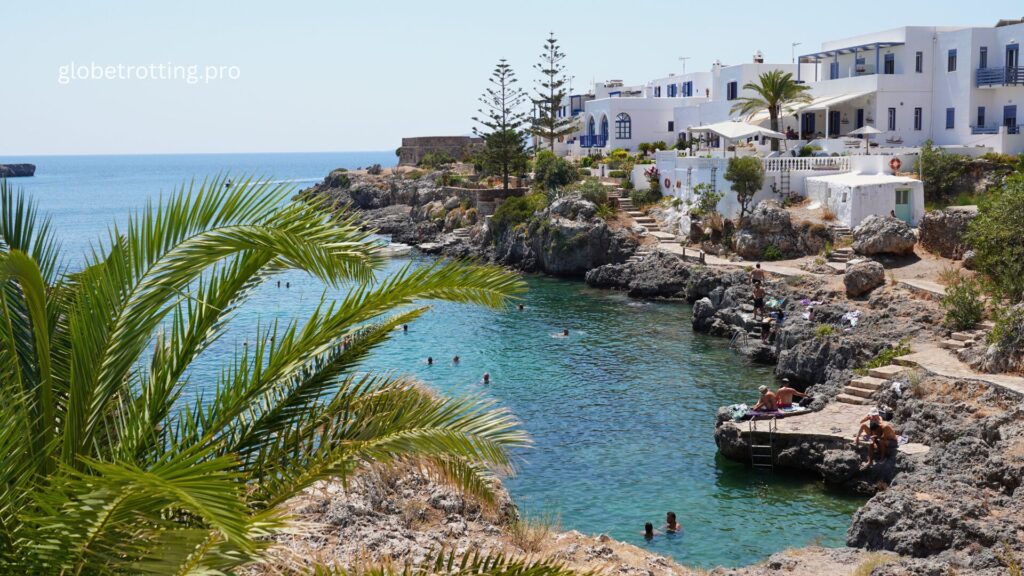
Psomoladea
Lunch at Psomoladea was an unforgettable culinary experience, easily ranking among the best restaurants I have ever dined at. This gem of a restaurant offers an exquisite celebration of flavors rooted in local traditions and elevated to modern perfection.
True to its name, which translates to “bread and oil,” the meal began with a medley of simple yet divine starters: freshly baked bread paired with golden olive oil and a truffle-infused cheese that melted on the palate. Next came a tart bursting with kopanisti cream—a tangy, peppery cheese—artfully combined with fresh fruits and poppy seeds, followed by baked shrimp nestled in a bed of vibrant greens and a velvety squid ink risotto. Then came the star of the meal: a perfectly seared tuna fillet, elegantly accented with black olives and a creamy mashed onion base. To finish, dessert arrived as a decadent chocolate mousse adorned with cranberries—a sweet finale that lingered long after the last bite. Each dish was an ode to culinary artistry.

Exploring Chora by Night
Our accommodation, Kythira Secrets Suites in Viaradika, proved ideal for exploring the island. Centrally located, most destinations were a 20-minute drive away, making it a convenient base. After we settled in, we made our way to Chora, the island’s vibrant center, and wandered its cobblestone streets lined with shops and eateries. We visited the Follow Your Art gallery and marvelled at the “Collectiva Κυθήρων” exhibition, which included paintings, sculptures, photographs, drawings, tapestries, ceramics, and engravings from local artists. Each piece reflected the creativity and heritage of the island, offering a window into the vibrant artistic soul of Kythira.

A visit to Vivliogatos bookstore and Eva’s Fashion offered a glimpse into the island’s history, with Mrs. Eva, sharing tales of the island and her shop’s 29-year history. Lastly, at Choraki, a trendy bar, we sipped on Mastiha Spritz, a refreshing concoction of mastiha, Prosecco, hibiscus soda, and basil.
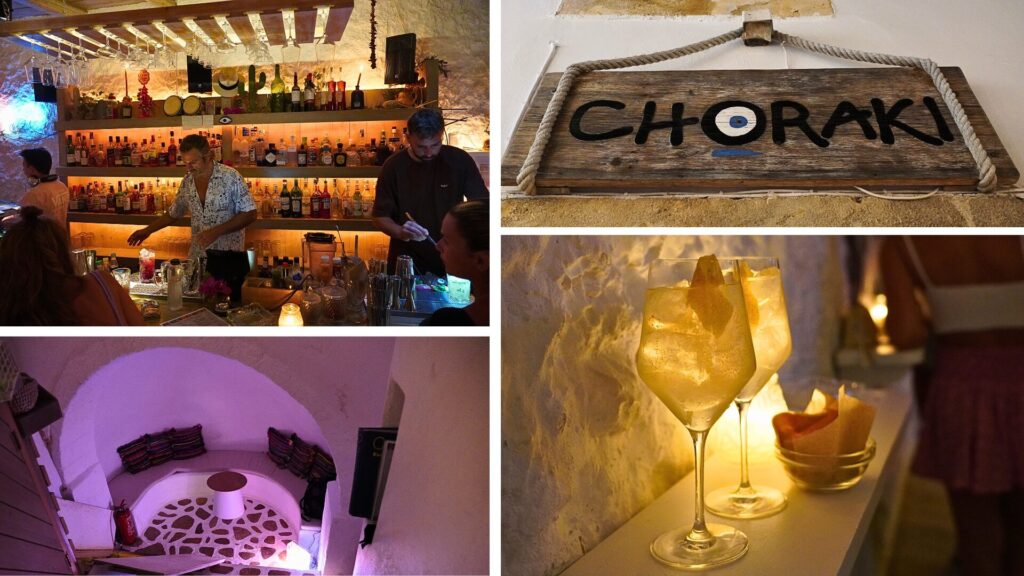
Kaladi Beach
The following day, we set to explore Kythira’s finest. Our first stop, Kaladi Beach, often touted as Kythira’s most beautiful, lived up to its reputation. After parking at the top, we descended 168 steps to reach its pebbled shore. With no canteens onsite, carrying essentials is a must.
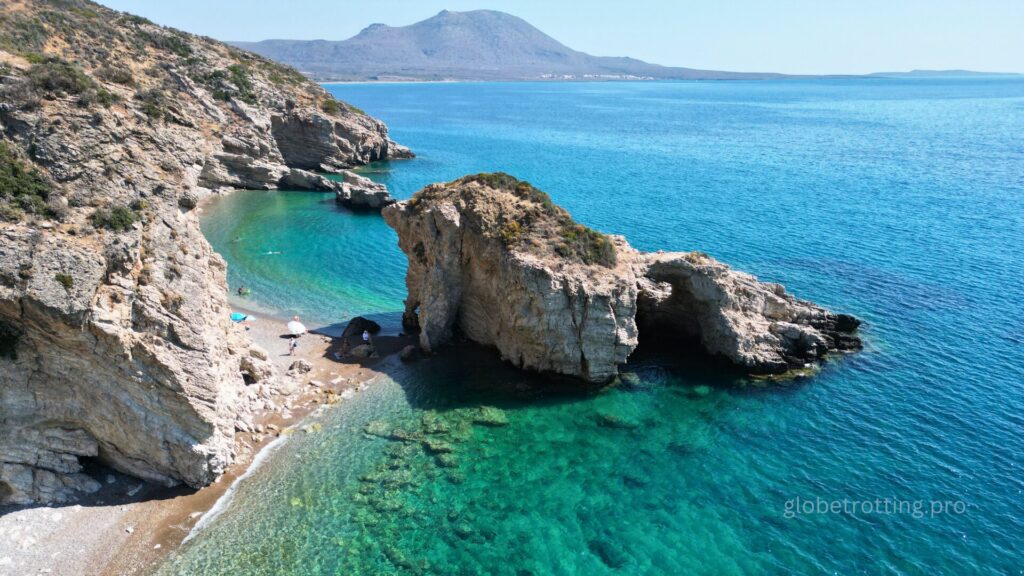
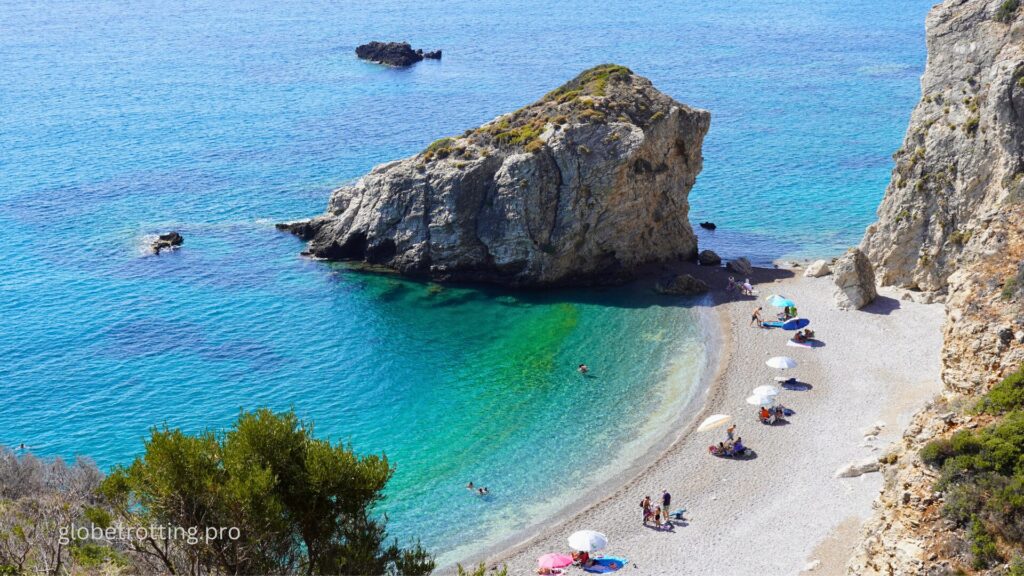
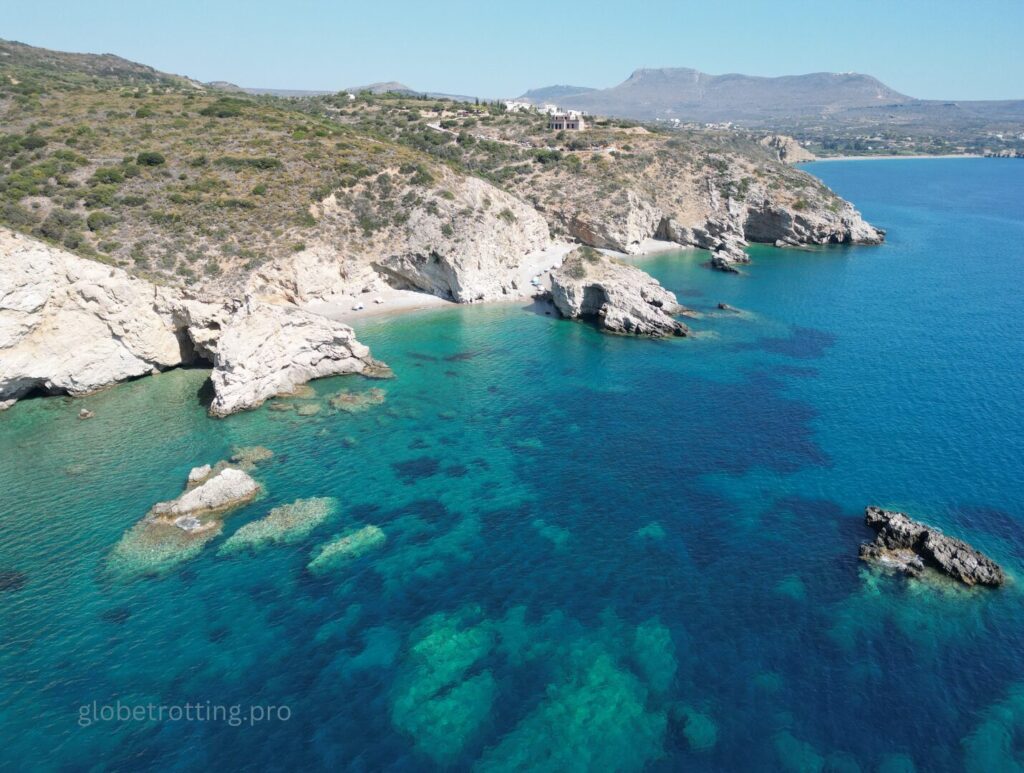
Chora by Day
Around noon, we headed to Chora, now tranquil and serene since most visitors frequent nearby beaches. At Bon Bon Fait Maison, brunch was delightful: a guacamole and fried egg bun and a green crepe with arugula pesto, Naxos graviera cheese, olives, and capers.
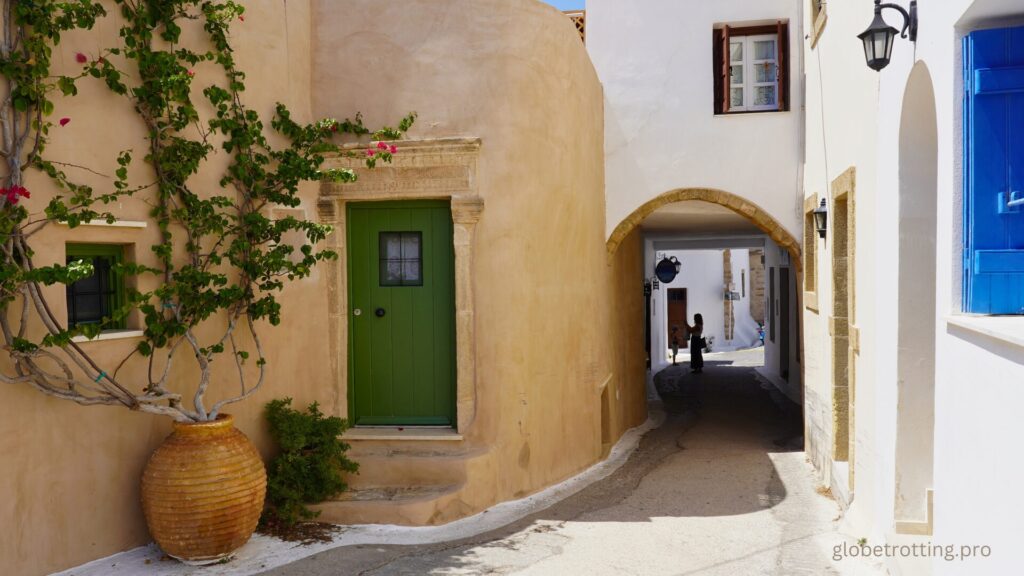

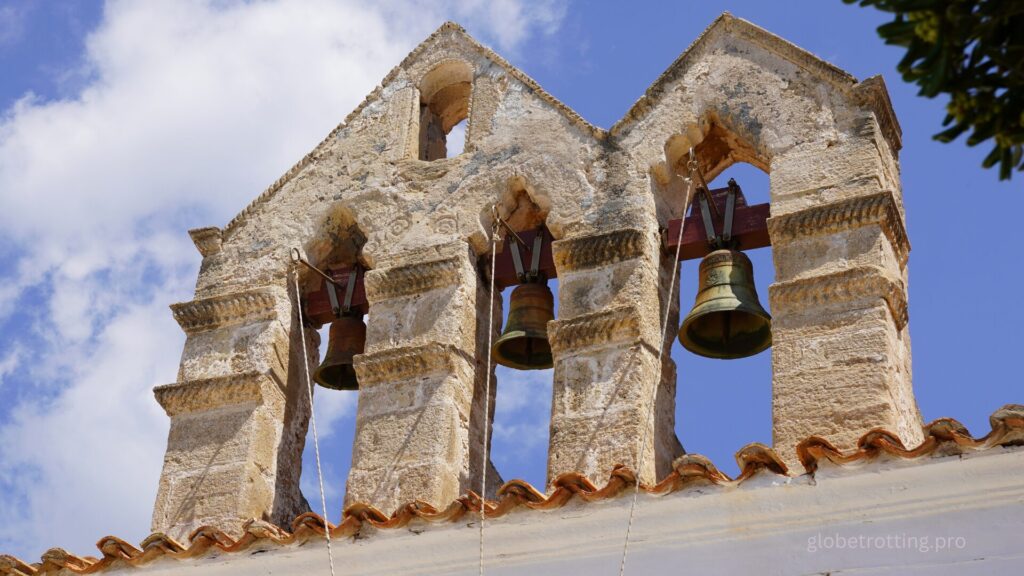
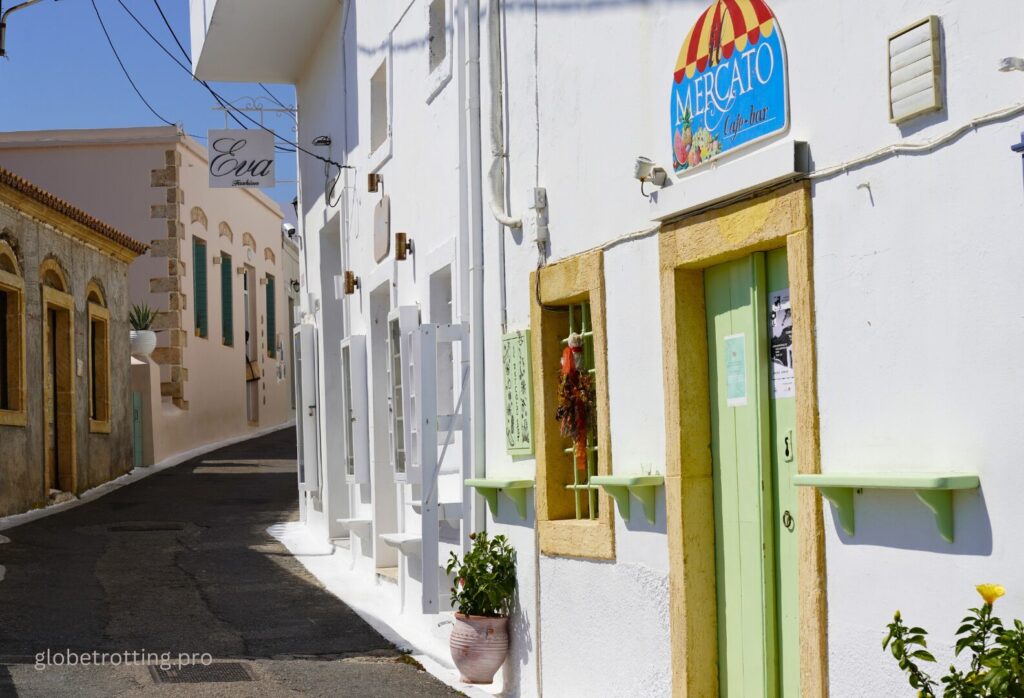
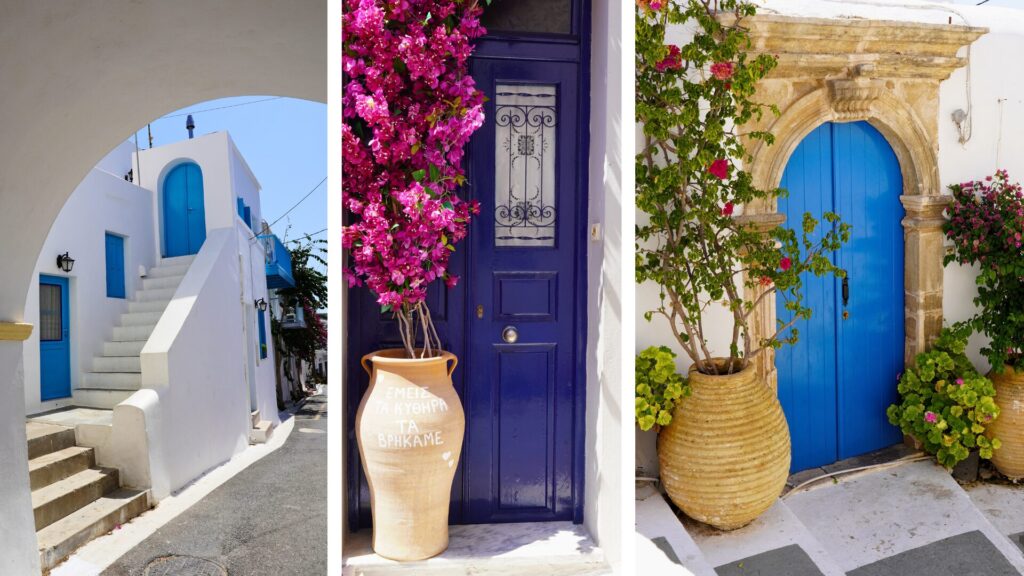
The Castle
Reenergized and ready to explore, we made our way to the majestic Castle of Chora, a stunning testament to Venetian craftsmanship and influence. As we approached the entrance, we passed through a tunnel, known also as the “fossa”. To the left of the entrance lies the castle’s former prison, its austere presence offering a sobering glimpse into the past.
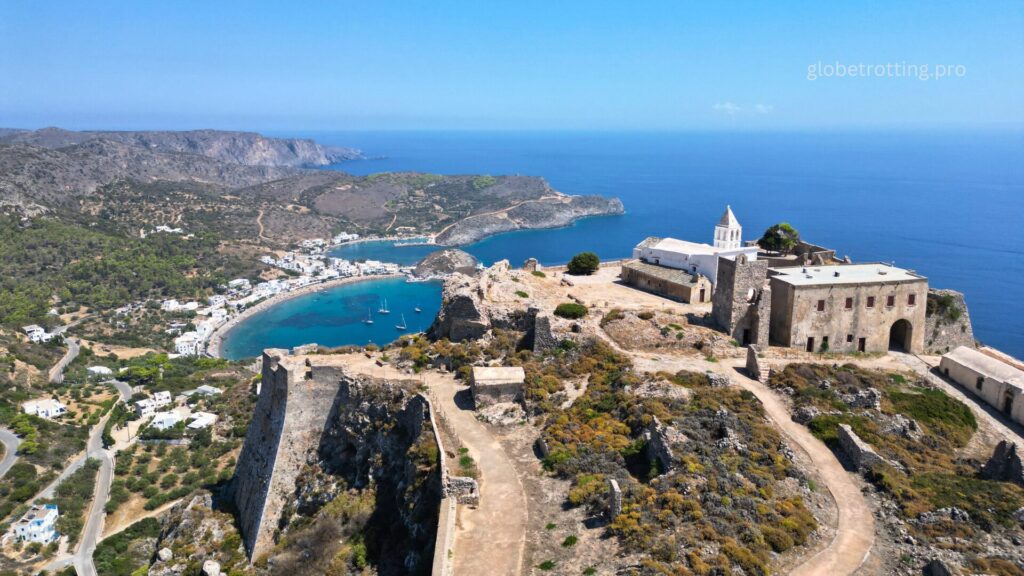
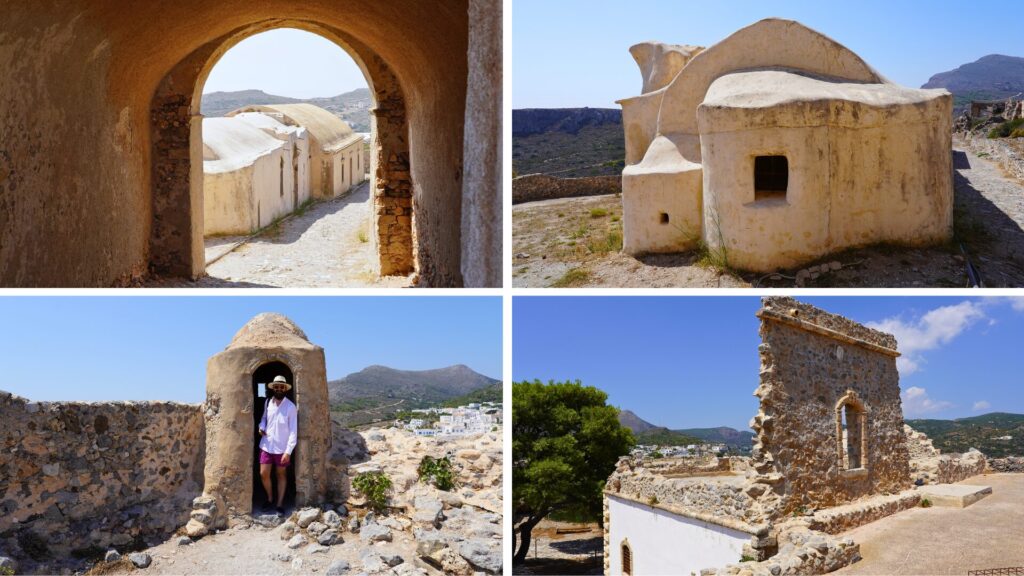
Continuing our ascent, we reached a section resembling an observatory, where the panoramic views took our breath away. From this vantage point, the entire island unfolded before us, with sweeping vistas of the Aegean Sea and the surrounding landscapes. Along the way, we encountered the Temple of Panagia Myrtidiotisa, who is considered the island’s patroness.
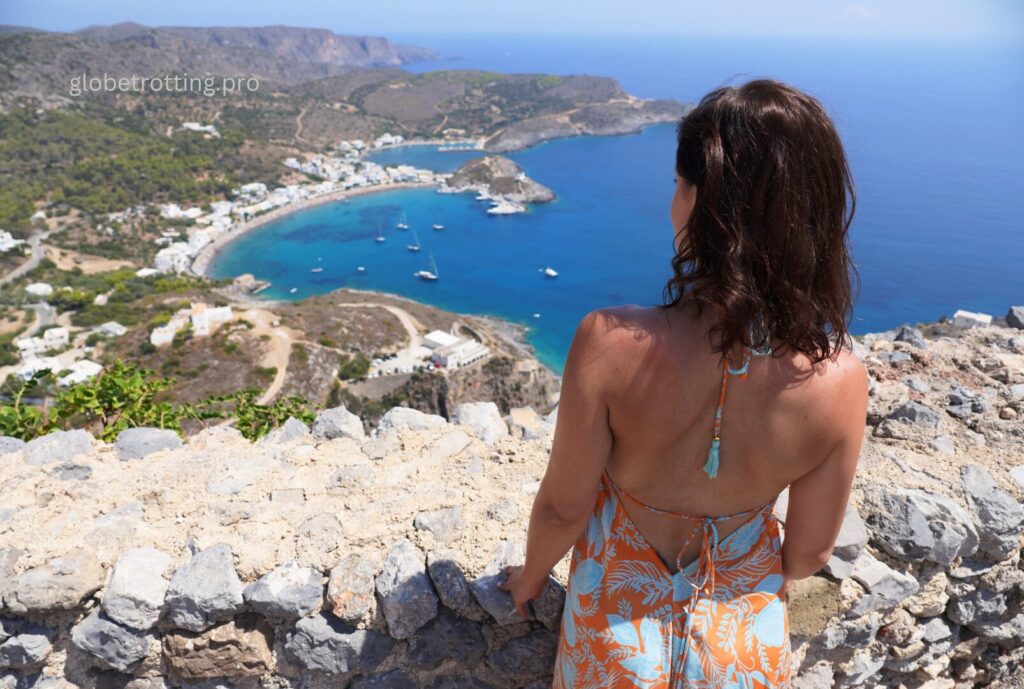
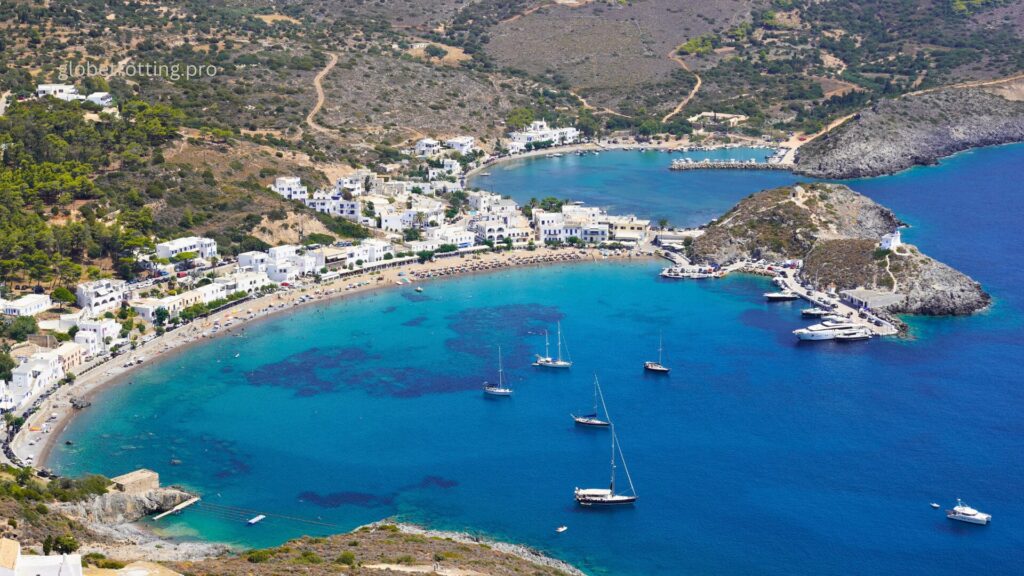
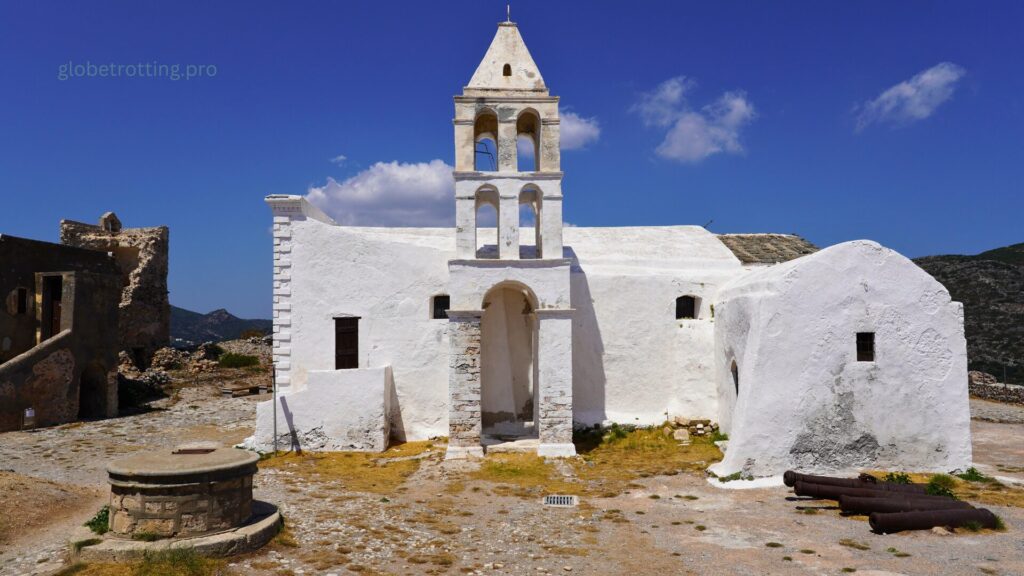
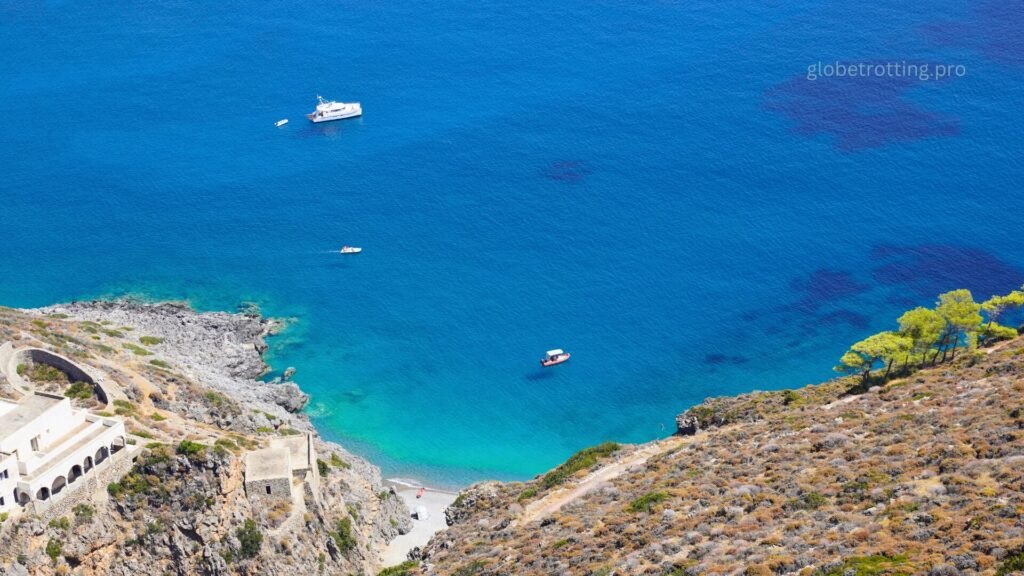
Fossa Café
On our way back, we stopped at Fossa Café, where we indulged in a refreshing nectarine granite and a basil-honey lemonade while soaking in the stunning hilltop views. This popular spot is usually bustling with visitors, but we were fortunate to find it quiet and had the coveted front-row seats to the breathtaking panorama all to ourselves.
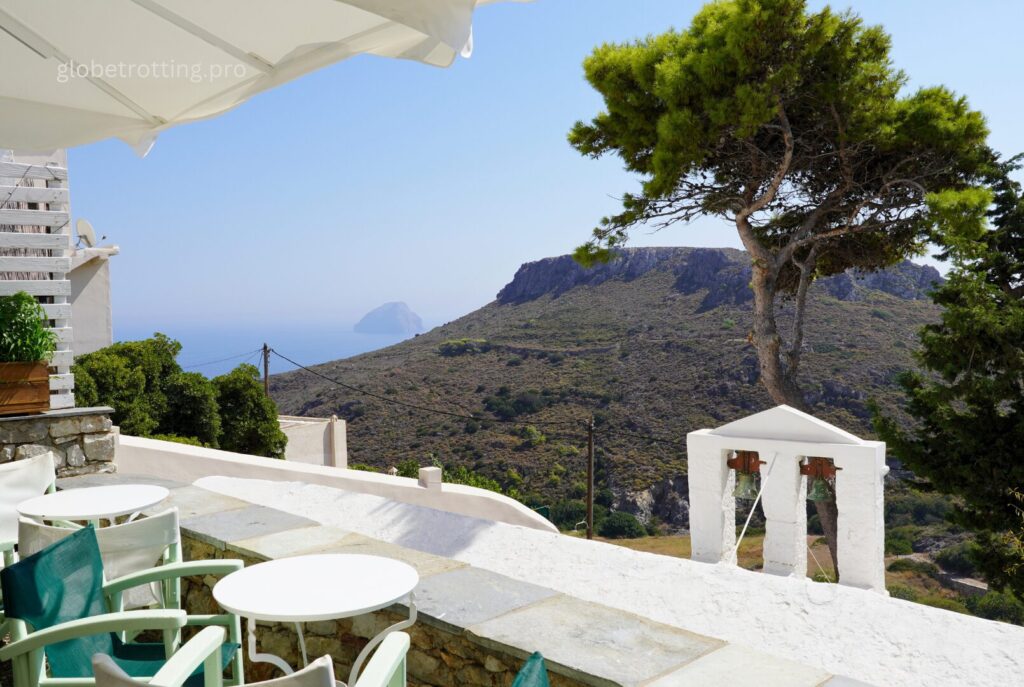
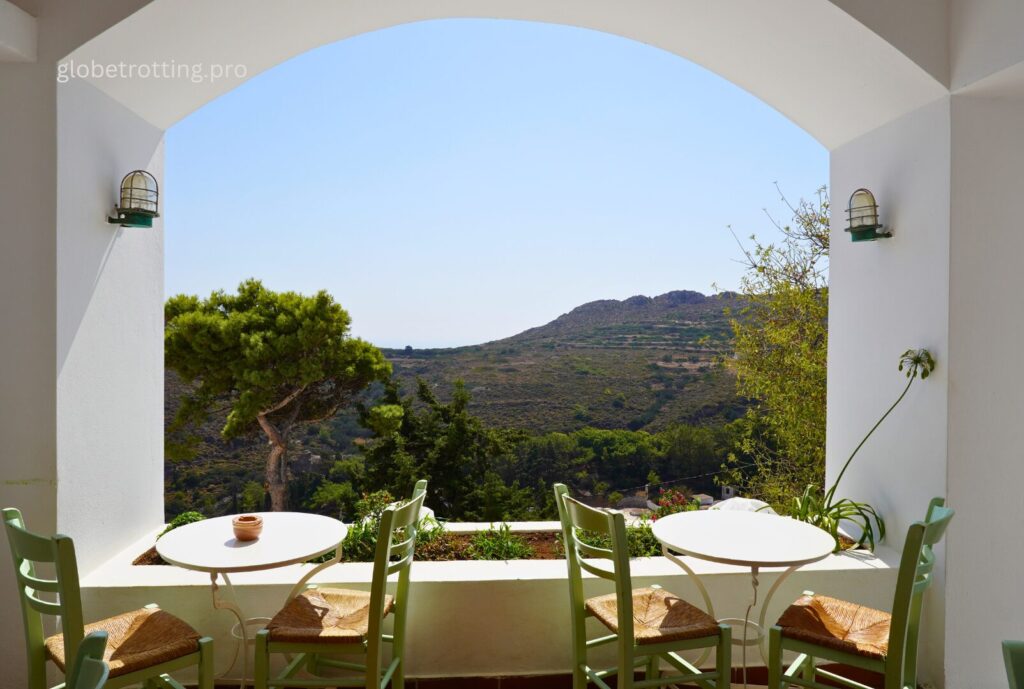
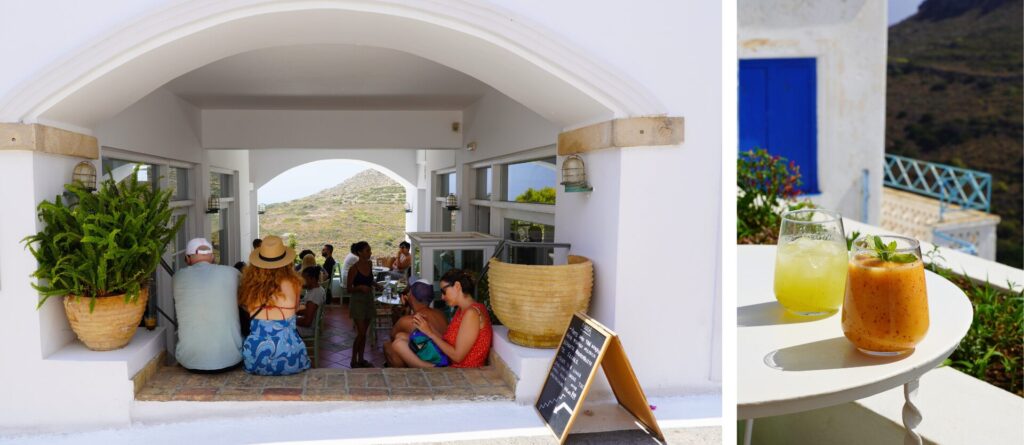
Chalkos Beach
Chalkos Beach, semi-organized and pebbled, was our next destination. The water transitioned from turquoise to emerald, a mesmerizing spectacle. We rented front-row sunbeds for €12, soaking in the tranquility.
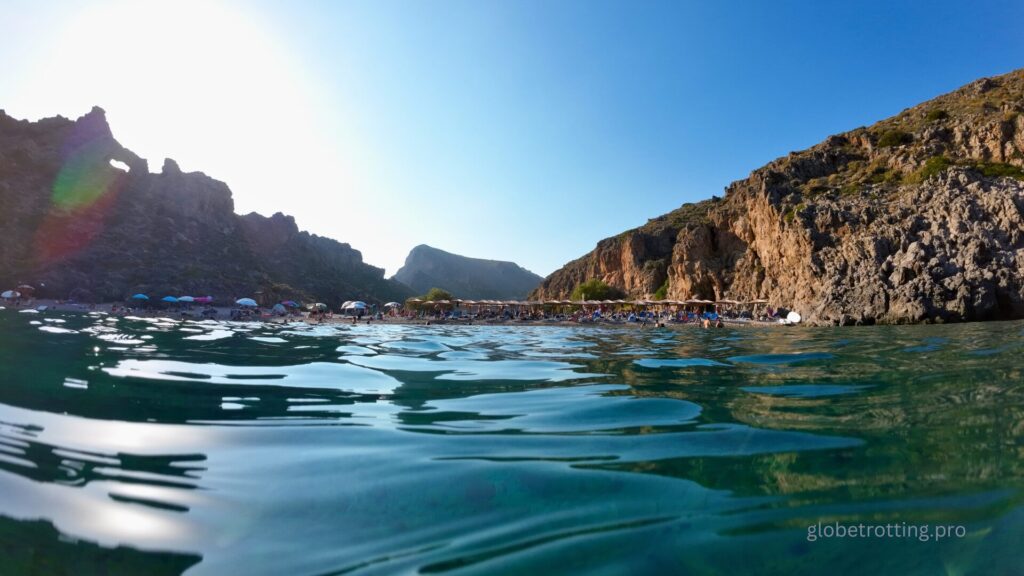
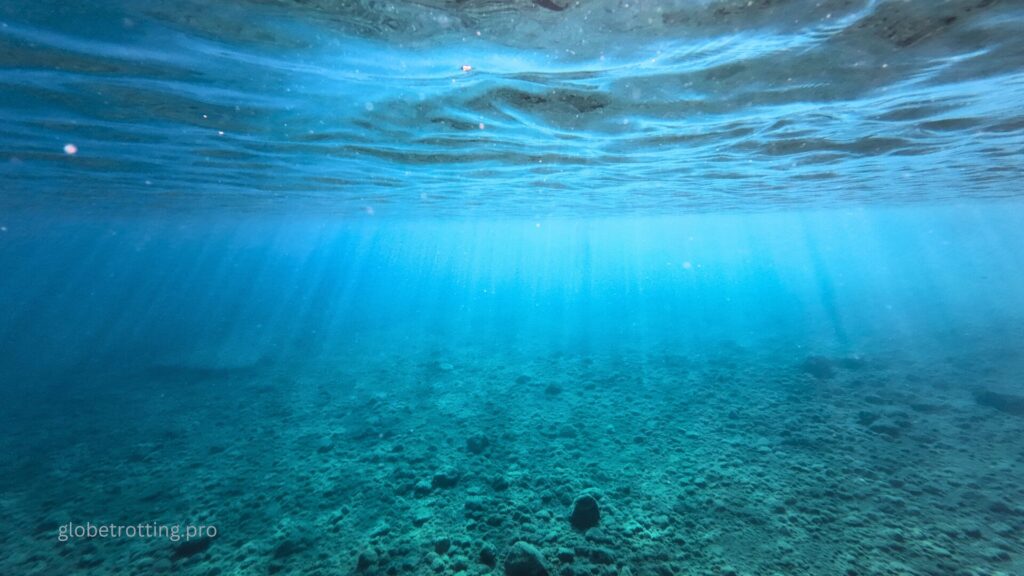
Myrtidiotissa Monastery
As sunset approached, we visited the Monastery of Panagia Myrtidiotissa, the largest in Kythira. It is nestled in Myrtidia among lush myrtles and houses the island’s most treasured relic: the icon of Panagia Myrtidiotissa, which is steeped in miraculous traditions. Highlights include its 26-meter limestone bell tower, the old chapel where the icon was discovered, and the grand 15-day procession of the icon across the island, celebrating its discovery on September 24. The serene gardens and the church’s architecture left us in awe.
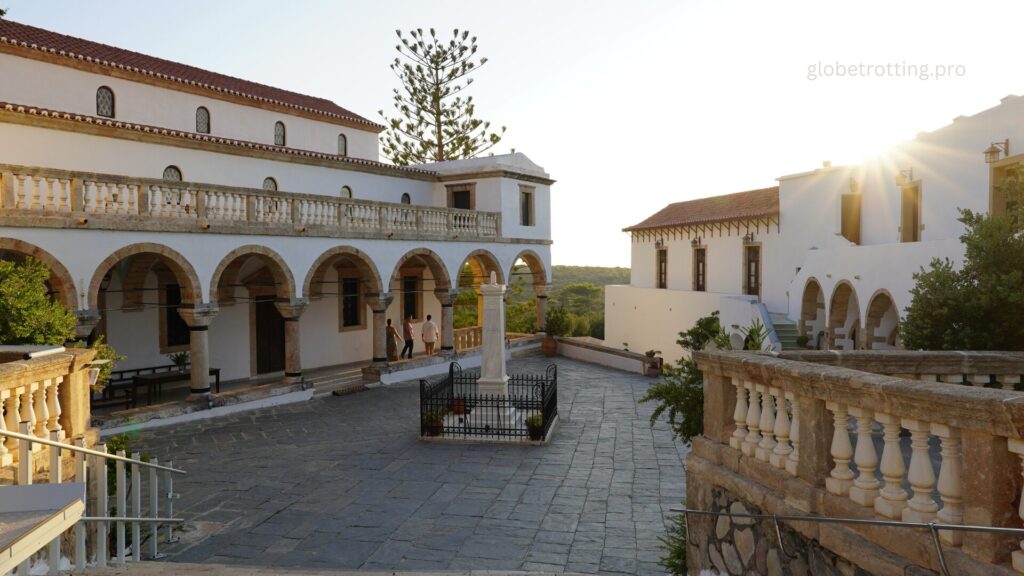
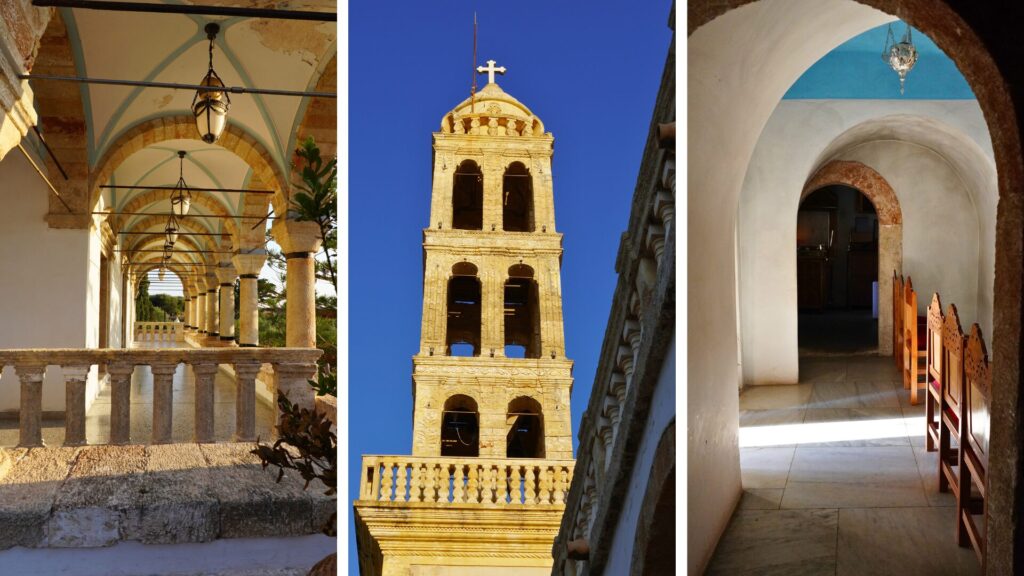
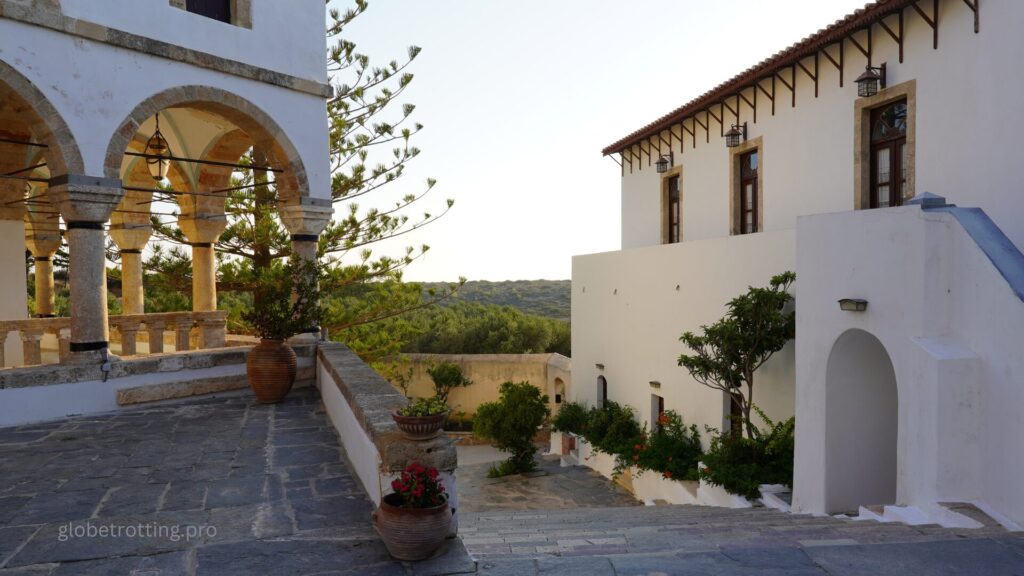
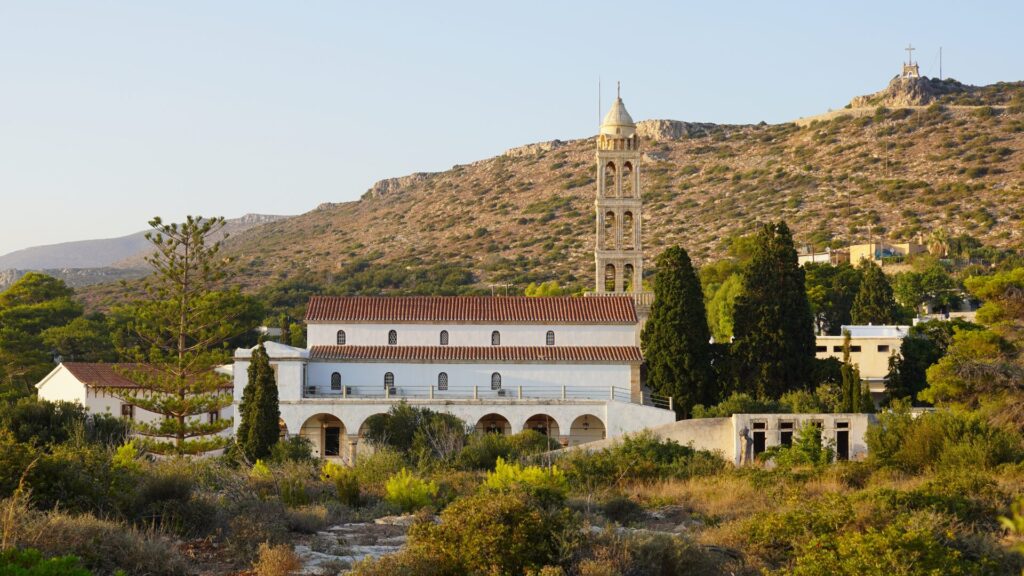
Sunset at the Church of Agios Nikolaos Krassas
Following Mrs. Eva’s advice, we ended the day at St. Nicholas Krassas, where the golden hues of the setting sun painted an unforgettable scene. The history behind this place, as the rumour goes, was that a sailor that was carrying wine fell into bad weather and prayed to St. Nikolaos, the protector of sailors, to salvage the crew and the merchandise and to express his gratitude he would build a church in his name, and so he did.


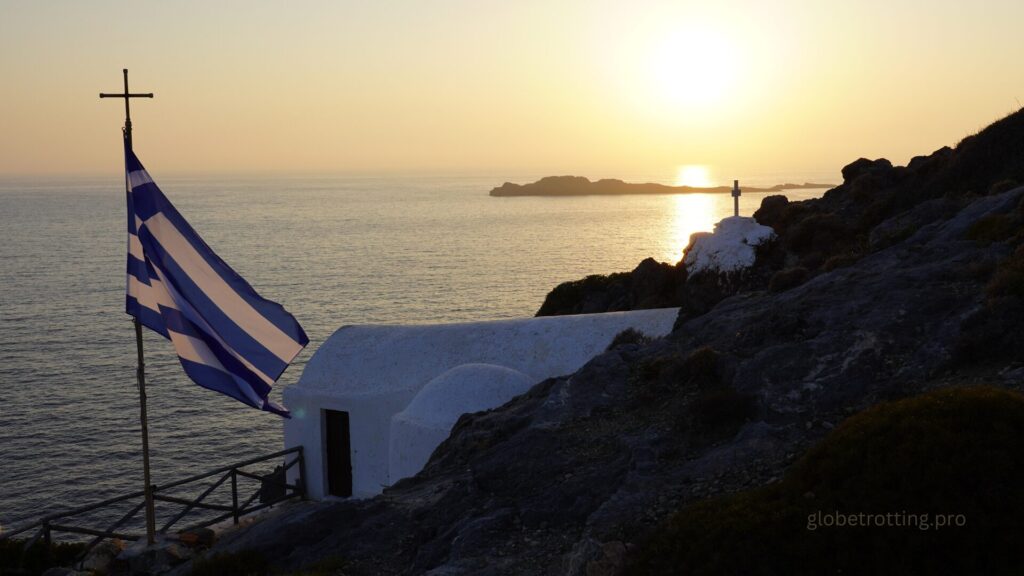
Skandeia
We ended the night at Skandeia, one of the most renowned restaurants on the island, where every dish felt like a heartfelt embrace of Kythirian home cooking. The meal was a feast of traditional flavors, starting with fresh fish that tasted like it had been caught just hours earlier. The standout dish was rooster slow-cooked in wine and red sauce, its tender meat infused with rich, aromatic spices.

We also savored eggplants paired with xinochondros, a creamy fermented wheat delicacy, alongside perfectly seasoned green beans and a velvety fava puree. Each plate evoked the warmth and comfort of homemade casseroles, making for a perfect finale to a day steeped in history, culture, and island charm.

